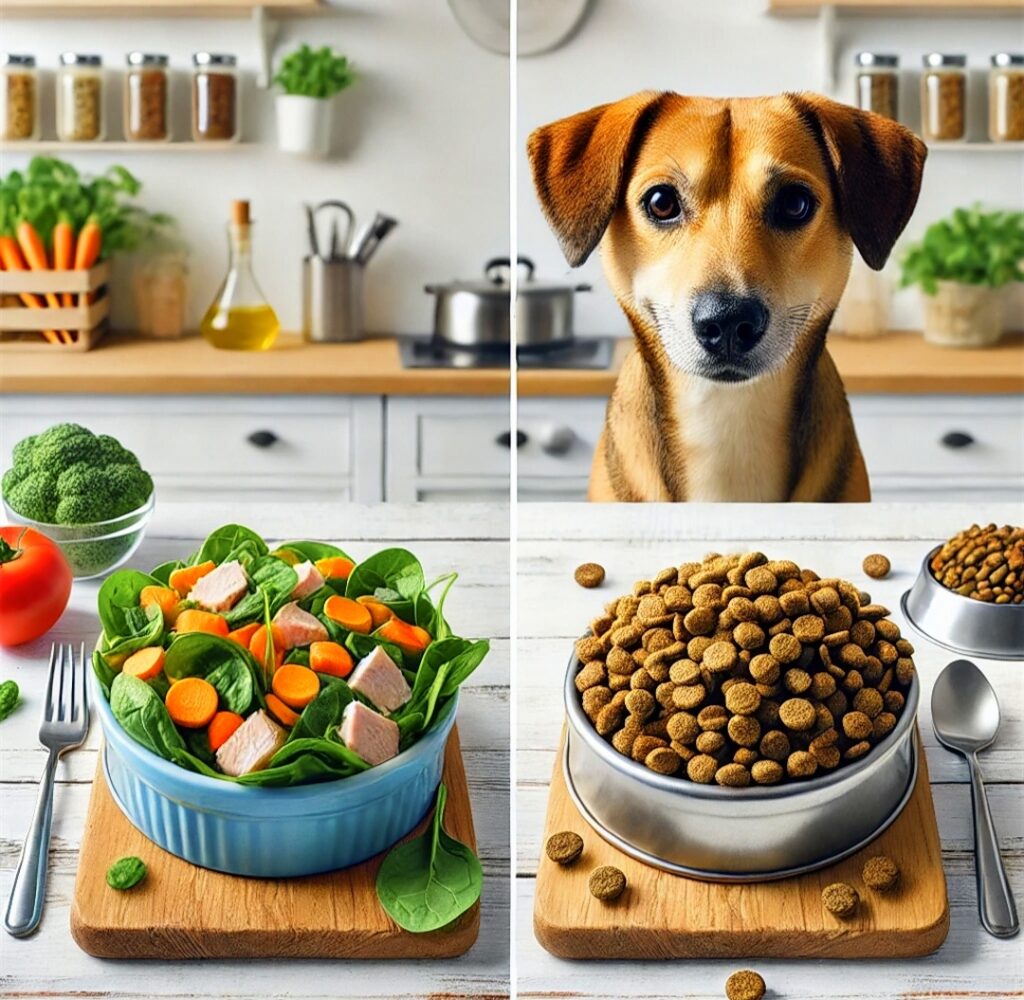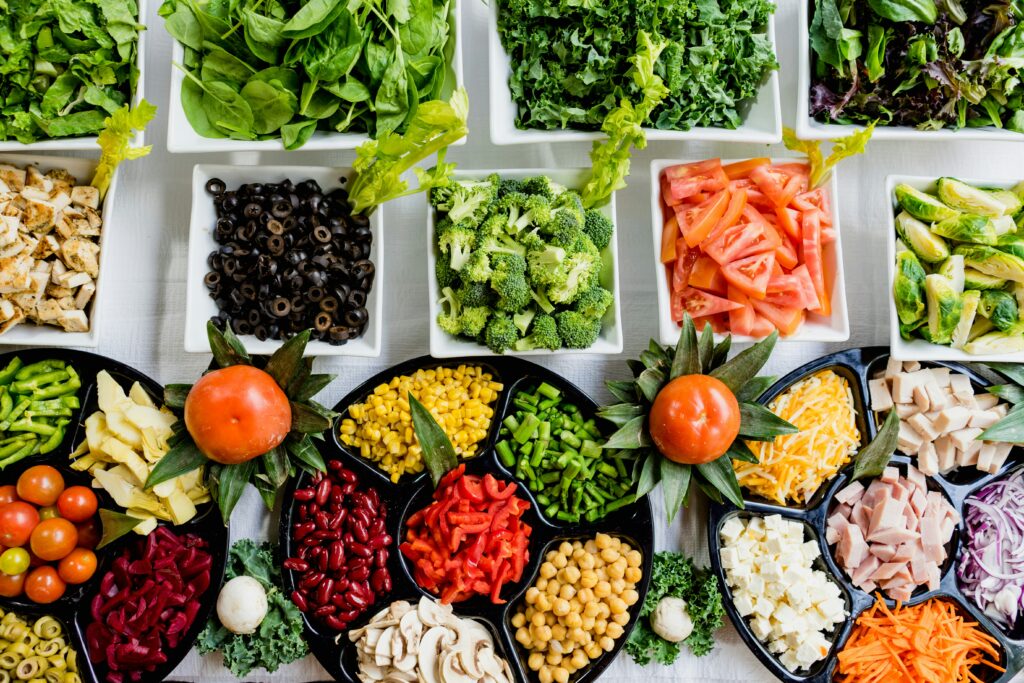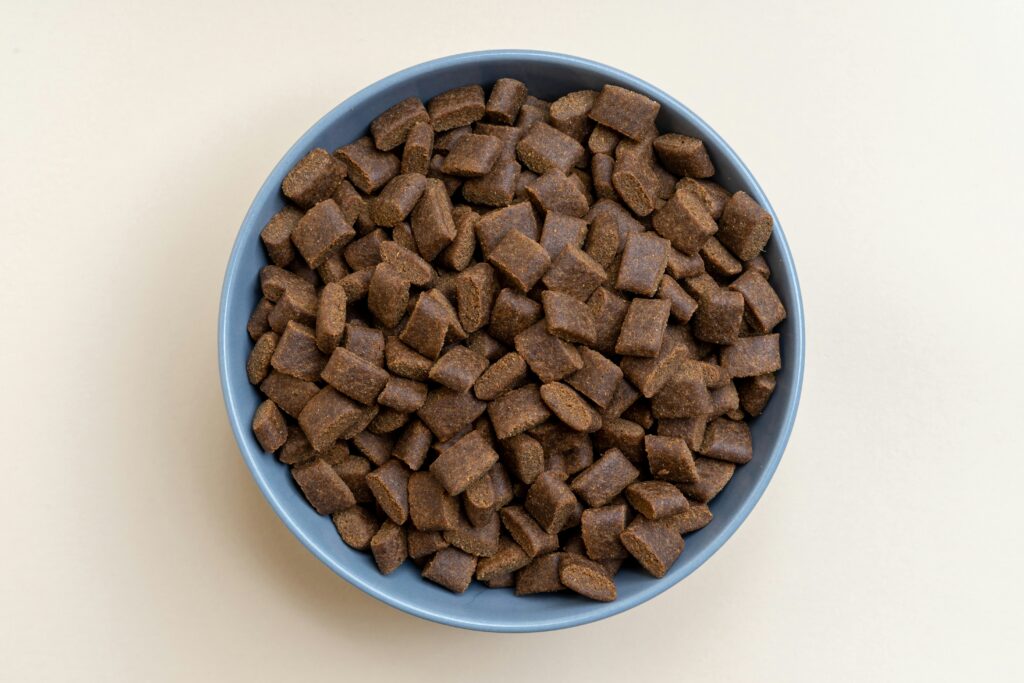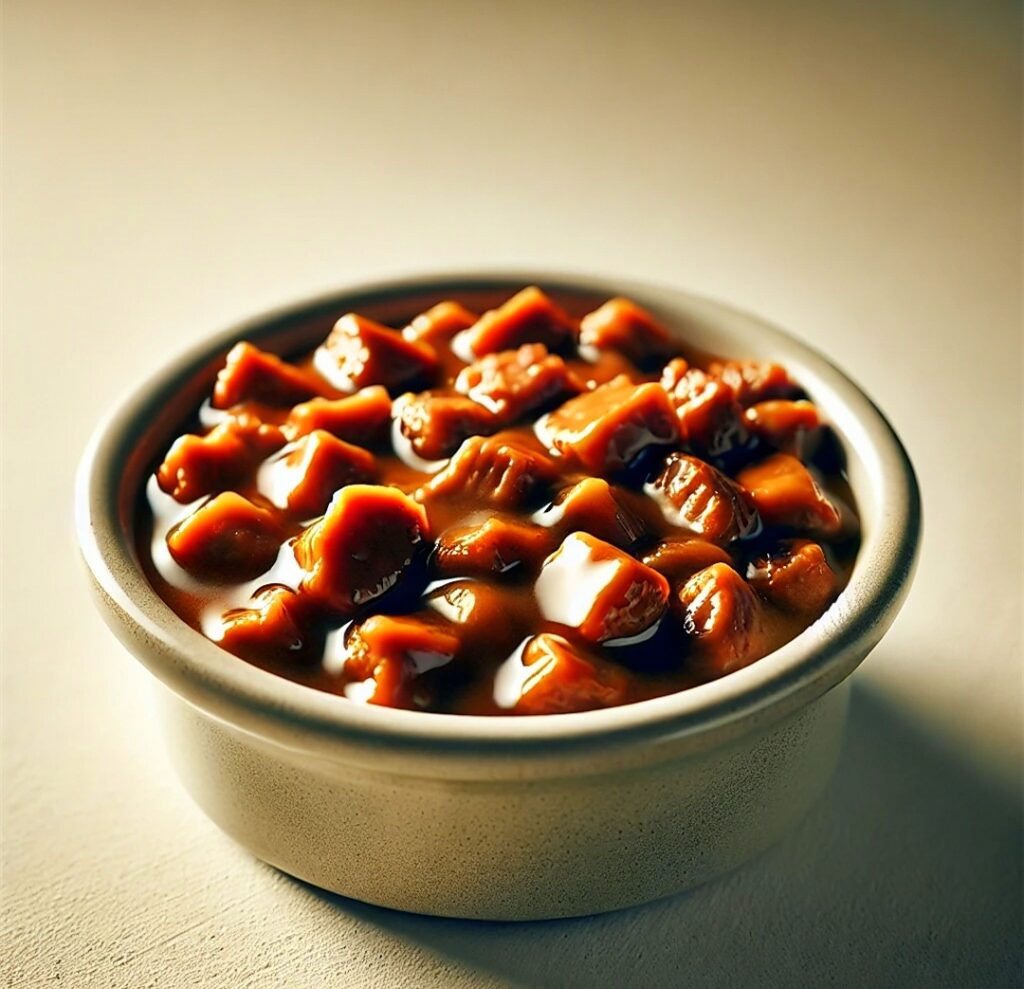
As a pet parent, you want nothing but the best for your furry friend. Their diet plays the most important role in their health and lifespan. But with so many options out there, choosing the right food can feel overwhelming.
The biggest debate in canine nutrition is whether homemade dog food is better than commercial kibble. Some believe fresh, home-cooked meals provide superior nutrition, while others argue that kibble is a well-balanced, vet-approved choice.
So, what’s the best option for your dog? In this guide, we’ll break it all down, covering the pros and cons of each diet and ultimately deciding which one comes out on top.
What’s Inside Your Dog’s Food? Understanding the Ingredients
Before choosing between homemade dog food and kibble, it’s important to understand what’s actually in your dog’s food.
Commercial Kibble: A Processed but Balanced Option
Kibble is a dry dog food made by combining meat, grains, vegetables, and added vitamins and minerals. These ingredients are processed and shaped into small pellets that can be stored for months.
Some kibble brands use high-quality proteins and essential nutrients, but many rely on cheap fillers, artificial preservatives, and questionable meat by-products.
Homemade Dog Food: Fresh, Natural, and Customizable
Homemade dog food involves preparing fresh meals using real fresh ingredients like meat, veggies, and healthy fats. Since you control what goes into your dog’s bowl, there are no artificial additives or preservatives.
Fresh food generally provides better nutrient absorption and digestibility, but the key challenge is ensuring a balanced diet. Without proper planning, homemade meals can lack essential vitamins and minerals, leading to long-term health issues.
The Case for Homemade Dog Food: Why More Owners Are Switching

Many pet parents are ditching kibble in favour of fresh, home-cooked meals. Here’s why:
1. Higher-Quality Ingredients
One of the biggest advantages of homemade food is control of what goes into your dogs system. You choose high-quality proteins, fresh vegetables, and healthy fats, eliminating harmful fillers and preservatives.
Many commercial dog foods use meat by-products—low-quality parts of animals that may not provide the best nutrition. Homemade food lets you avoid these questionable ingredients.
2. Better Digestibility
Dogs often struggle to digest heavily processed kibble. Many pet owners notice their dogs experience less bloating, more solid stool , gas, and diarrhoea when switching to homemade meals. Fresh food is naturally easier to digest, leading to healthier gut function.
3. Potential Health Benefits
A well-balanced homemade diet can lead to:
A shinier coat
More energy
Stronger immunity
Healthier joints and muscles
Dogs on fresh food diets also tend to maintain a leaner body weight, reducing the risk of obesity-related diseases like diabetes and heart disease.
4. Fewer Allergies and Sensitivities
Many dogs are allergic to common kibble ingredients like corn, wheat, soy, and artificial preservatives. Since homemade food allows for complete control over ingredients, it’s easier to avoid allergens and tailor meals to your dog’s needs.
5. Customization for Different Life Stages and Health Needs
A puppy, a senior dog, and an active working dog all have different nutritional needs. Homemade food allows you to adjust portion sizes, nutrient levels, and supplements based on your dog’s age, weight, and health conditions.
Despite these advantages, homemade dog food comes with challenges.
The Challenges of Homemade Dog Food
1. Time and Effort
Cooking homemade meals every day can be time-consuming. Some owners prefer batch-cooking and freezing portions, but meal prep still requires effort.
2. Risk of Nutrient Deficiencies
Dogs need specific amounts of protein, fats, vitamins, and minerals. Without careful planning, a homemade diet can lack key nutrients like calcium, phosphorus, and taurine, which are essential for bone health, heart function, and overall . Always consult your vet first so you get a tailored meal or try out vet approved recipes
3. Cost Considerations
Fresh, high-quality ingredients can be expensive. If you’re feeding a large dog, homemade meals may cost significantly more than kibble.
4. Storage and Shelf Life
Unlike kibble, which can sit in a bag for months, homemade food requires refrigeration or freezing. This can be inconvenient, especially when traveling.
Now, let’s look at commercial kibble.
Commercial Kibble: Is It the Smarter Choice?

1. Convenience and Affordability
Kibble is easy to serve, store, and transport. It’s also budget-friendly, making it a practical choice for busy dog owners.
2. Nutritional Completeness
High-quality kibble is formulated to meet AAFCO (Association of American Feed Control Officials) standards, ensuring your dog gets essential nutrients.
3. Longer Shelf Life
Unlike fresh food, kibble can be stored for months without spoiling. This makes it a hassle-free option for pet parents who don’t have time to cook.
4. Dental Benefits
Some kibble brands are designed to reduce plaque build-up and improve oral health. Chewing dry food can help scrape off tartar from your dog’s teeth.
Despite these benefits, kibble isn’t without drawbacks.
The Problems with Kibble
1. Heavily Processed Ingredients
Kibble is made through high-heat processing, which destroys many natural nutrients. While synthetic vitamins and minerals are added back in, fresh food generally offers better nutrient absorption.
2. Low-Quality Fillers
Many kibble brands use corn, wheat, and soy as cheap fillers. These ingredients provide little nutritional value and can contribute to weight gain and allergies.
3. Artificial Preservatives and Additives
Some kibble brands contain BHA, BHT, and ethoxyquin, artificial preservatives linked to potential health issues.
4. Not Suitable for All Dogs
Some dogs, especially those with allergies, digestive issues, or special dietary needs, don’t thrive on kibble alone. They may require additional supplements or fresh food to stay healthy.
So, What’s the Verdict? Which One Wins?
When comparing homemade dog food to commercial kibble, there’s a clear winner and that’s the homemade option. its a much healthier option and can impact your dogs lifespan positively
Fresh, natural ingredients have better digestibility, better nutrient absorption, and fewer allergens compared to processed kibble. Dogs fed fresh food diets often have higher energy levels, shinier coats, and improved long-term health.
However, the key to making homemade food the best choice is nutritional balance. If meals lack essential vitamins and minerals, your dog’s health could suffer.
For busy pet owners who can’t prepare homemade meals every day, a compromise could be feeding a high-quality kibble mixed with fresh ingredients like lean meats, vegetables, and healthy oils. This provides convenience while boosting nutrition.
Choose the Best for Your Dog
At the end of the day, your dog’s diet should prioritize high-quality, nutritious ingredients. If you have the time and resources to prepare balanced homemade meals, this is the best option for long-term health.
If you rely on kibble, choose a premium brand with real meat, no artificial additives, and minimal fillers. Adding fresh, whole foods as toppers can improve your dog’s nutrition.
What do you feed your dog—homemade meals, kibble, or a mix of both? Share your thoughts in the comments below!


